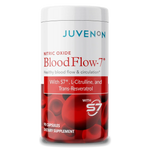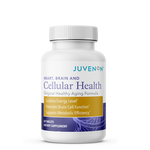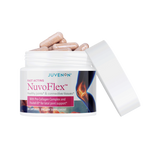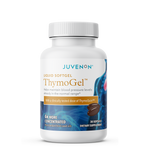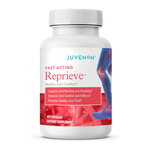Are you tired of running to the bathroom all the time? Or are you scared of leaking at the most inopportune time?
Urinary incontinence in older adults is a significant issue that causes embarrassment and decreased quality of life for millions. Both women and men experience urinary incontinence, although it affects more women. It is common, although often undertreated.
You don’t need to suffer in silence! Today’s article will cover everything you need to know about the topic, including causes and treatment for urinary incontinence in elderly female and male patients.
Knowledge is power. Understanding the root causes of symptoms and supportive interventions can help you find relief and live life to the fullest. Keep reading to learn more about:
- What is urinary incontinence? And, is it a normal part of aging?
- Types of urinary incontinence and symptoms
- Causes of urinary incontinence in men and women
- Urinary incontinence treatment for elderly people + prevention strategies
Everything You Need to Know About Urinary Incontinence
Urinary incontinence is decreased bladder control, resulting in an involuntary loss of urine. (1)
Urine leakage can be mild or severe will the loss of a large volume of urine. Symptoms can include:
- Increased urinary frequency
- Increased urinary urgency
- Urinary leakage
- The sensation of a full bladder (even when not full)
In a well-functioning urinary system, the kidneys filter the blood and make urine, which is stored in the bladder. Pelvic floor muscles hold the bladder in place and the urethra closed. The brain signals when it’s time to release the urine in the (full) bladder. There aren’t leaks and accidents. After you have the urge to urinate you should be able to hold your urine for an amount of time if a bathroom isn’t available.
There is the perception that urinary incontinence is inevitable with age. While bladder muscles can weaken with age and the prevalence of urinary incontinence increases in older adults, it’s not a given. (2)
Types of Urinary Incontinence and Their Symptoms
Urinary incontinence may be temporary or a chronic condition, depending on the type and cause. (1)
Let’s look at the different types of urinary incontinence:
Stress Incontinence
Stress incontinence is due to weak pelvic floor muscles. Physical movements, such as exercise, sneezing, laughing, and coughing, trigger urinary leakage.
It’s more common in women, including older women, and especially women who’ve had children and experienced pelvic muscle weakness from pregnancy and childbirth. It’s less common in men. (1, 3)
Urge Incontinence
Urge incontinence, also called overactive bladder, refers to a strong, sudden urge to urinate. Then, often, it’s difficult to make it to the bathroom on time without leakage. People with this type of incontinence may feel the urge to urinate even when the bladder is empty, suggesting a disconnection with the brain-bladder signaling. They may also experience increased urinary frequency at night (nocturia). (1, 3)
Both men and women experience urge incontinence. It’s more common in women after menopause and in men with prostate issues. (3)
Mixed Incontinence
People who experience both stress incontinence and urge incontinence fall into this category. They experience symptoms of both.
Overflow Incontinence
With overflow incontinence, the bladder doesn’t fully empty when urinating. Then, the extra urine will leak or dribble out. People with this type of incontinence may push or strain to pass urine and have the feeling of incomplete emptying. They may only release a small amount of urine and need to urinate more frequently. Additionally, leaking can occur when there is more urine than the bladder can hold. (1, 3)
Functional Incontinence
Functional incontinence captures all the other reasons someone may not be able to make it to the bathroom on time other than physical issues with the bladder and pelvic floor system. For example, dementia, stroke, and other diseases may make it challenging for someone to feel bladder urges or make it to the bathroom. Functional incontinence is common is older adults with health conditions.
Causes of Urinary Incontinence in Older Adults
Some general causes and risk factors for urinary incontinence include:
- Kidney stones
- Constipation
- Excess weight
- Aging
- Poor overall health
- Urinary tract infections
- Caffeine and alcohol use
- Medication use (1, 3)
Specific medications can decrease bladder contractility, urethral tone, or the urge to urinate. Some medication categories with these possible side effects include:
- Anti-hypertensive medications (for high blood pressure)
- Muscle relaxants
- Antidepressants
- Antihistamines
- Sedatives
- Diuretics (1)
Please discuss all medication questions with your healthcare provider.
Additionally, women and men may have additional risk factors for developing urinary incontinence.
Causes in Women
Urinary incontinence affects around 51% of adult women, with stress incontinence the most prevalent form, affecting 25 to 45% of women over 30 years of age. (1)
Women may experience higher rates of incontinence because of pelvic floor dysfunction, often resulting from pregnancy and delivery. Both vaginal and cesarian deliveries contribute, as do multiple pregnancies. (3)
Other female-specific contributors include:
- Menopausal hormone changes may decrease muscle tone
- Interstitial cystitis – an autoimmune inflammatory condition affecting the bladder
- History of hysterectomy – hysterectomies (removal of the uterus) and other pelvic surgeries can affect bladder function (3)
Causes in Men
About 11% of men aged 60 to 64 and 31% aged 85 and older experience urinary incontinence. (4)
Contributors to male symptoms include:
- Enlarged prostate (benign prostate hyperplasia)
- Prostate cancer
- Prostatectomy (prostate removal) – often the treatment for prostate cancer (4, 5)
How to Prevent Urinary Incontinence
We will discuss natural support for urinary incontinence next, but prevention is always the best medicine. Here are some ways to stay healthy and prevent urinary incontinence as you get older:
- Remain active and strong
- Utilize pelvic floor physical therapy, especially for women who’ve been pregnant
- Support sex hormone balance
- Limit caffeine and alcohol
- Adjust fluid intake as needed
- Eat a nutritious diet
- Maintain a healthy weight
Natural Support for Healthy Bladder Function
Understanding the type of urinary incontinence and its causes will help determine the appropriate interventions and support. Work with your doctor at the first signs of incontinence for proper testing and diagnosis. There’s no need to be embarrassed; they are well-trained and can offer solutions that support your symptoms and quality of life.
Additionally, don’t overlook the power of herbal supplements for bladder support. The plant world offers solutions with a long history of traditional use plus modern scientific support.
Juvenon Iron Bladder is a bladder control formula that supports:
- Urinary frequency
- Accidental leaking
- Nighttime bathroom trips
- Full bladder sensation
- Healthy bladder function
This groundbreaking formula is suited for both men and women and includes these effective herbs:
- Three leaf caper extract – promotes a healthy urinary flow, supports bladder muscles (the secret to avoiding accidents), and helps reduce frequency
- Lindera extract – supplies powerful antioxidants for healthy bladder function and the prevention of bacteria in the bladder. Lindera has synergistic effects with horsetail (also in the formula).
- Pumpkin seed extract – supports healthy urinary flow and prostate health
- Cissus extract – supports a healthy inflammatory response and urinary tract health
- Saw Palmetto berry extract – helps reduce urgency and supports a balanced hormonal environment. (6, 7, 8)
Anyone who experiences frequent urination, urinary incontinence, and other bladder issues may benefit from an herbal bladder formula like Juvenon Iron Bladder. Always consult your healthcare provider for personalized guidance before beginning a new supplement. Take Iron Bladder with food and separate from medications by a few hours.
Takeaways
Many with urinary incontinence unnecessarily suffer when there are many supportive tools, from pelvic floor physical therapy to supplements that can help reduce symptoms and restore bladder function.
The first step is understanding the types of urinary incontinence, causes, and available support strategies. Address the underlying causes with your healthcare team and add Juvenon Iron Bladder for comprehensive support.
References
- Hu, J. S., & Pierre, E. F. (2019). Urinary Incontinence in Women: Evaluation and Management.American family physician, 100(6), 339–348.
- Milsom, I., & Gyhagen, M. (2019). The prevalence of urinary incontinence.Climacteric : the journal of the International Menopause Society, 22(3), 217–222.
- https://www.urologyhealth.org/urology-a-z/u/urinary-incontinence
- Gacci, M., Sakalis, V. I., Karavitakis, M., Cornu, J. N., Gratzke, C., Herrmann, T. R. W., Kyriazis, I., Malde, S., Mamoulakis, C., Rieken, M., Schouten, N., Smith, E. J., Speakman, M. J., Tikkinen, K. A. O., & Gravas, S. (2022). European Association of Urology Guidelines on Male Urinary Incontinence.European urology, 82(4), 387–398.
- Gacci M, De Nunzio C, Sakalis V, Rieken M, Cornu JN, Gravas S. Latest Evidence on Post-Prostatectomy Urinary Incontinence.J Clin Med. 2023;12(3):1190. Published 2023 Feb 2.
- Chen H, Hoi MPM, Lee SMY. Medicinal plants and natural products for treating overactive bladder.Chin Med. 2024;19(1):56. Published 2024 Mar 27.
- Schoendorfer N, Sharp N, Seipel T, Schauss AG, Ahuja KDK. Urox containing concentrated extracts of Crataeva nurvala stem bark, Equisetum arvense stem and Lindera aggregata root, in the treatment of symptoms of overactive bladder and urinary incontinence: a phase 2, randomised, double-blind placebo controlled tri.BMC Complement Altern Med. 2018;18(1):42. Published 2018 Jan 31.
- Suzuki M, Ito Y, Fujino T, et al. Pharmacological effects of saw palmetto extract in the lower urinary tract.Acta Pharmacol Sin. 2009;30(3):227-281.


